So, sensory safe spaces!
As I wrote about in my last post on these, sensory safe spaces are spaces you can go when you’re stressed to escape stressful sensory input and stimulation, and address your own sensory needs. They’re extremely personal because everyone has a unique set of sensory preferences, and so they’re all very different, but I wanted to share some ideas for setting one up yourself:
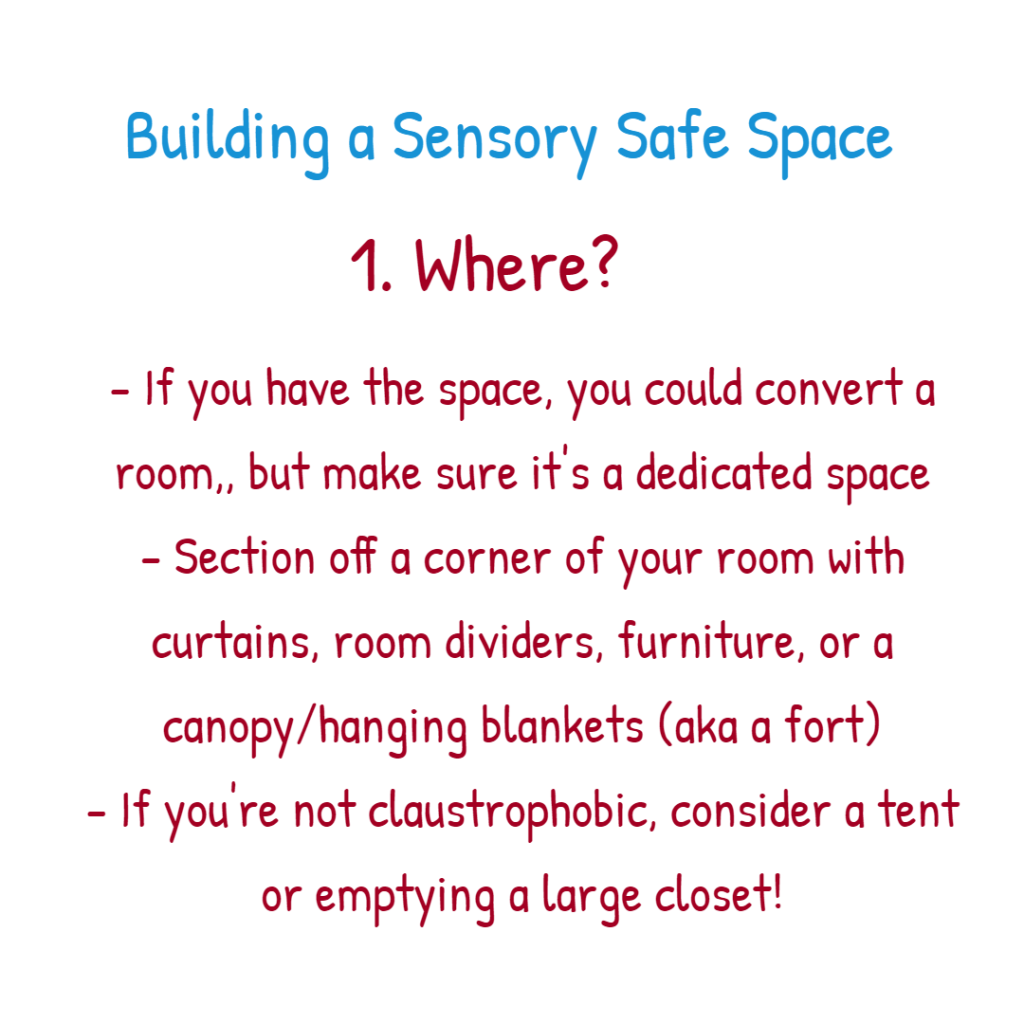
1. Firstly, you need to decide WHERE it’s going to be. If you have a spare room you’re allowed to convert, that’s really cool, but you have to remember it’s really important this sensory safe space is a dedicated space, and that people aren’t going to be going in and out of it, because it being private, and somewhere you know you have that you can go to, is key. A corner of a room is also great, particularly if you can section it off with curtains, or a room divider, or furniture. You can also consider using a canopy, or a pop up tent, to make a space in one area of a room!
Also, depending on how big it is, and if you’re someone who feels claustrophobic or not, you can actually empty a closet, and use the closet as your safe space!
2. Now for the actual design part. I’ve split this into the main sensory experiences:
VISUAL – consider dimmers/curtains for windows, building a fort with string and blankets or hanging a canopy, to block out light. You can also add small lamps, string lights, and consider coloued bulbs, or lava lamps. Light projectors too!
Posters or artwork can also provide positive visual input. Even having a box with a set of images you like to look at, or cards!
SOUND – noise cancelling headphones or even just ear plugs are great if you can’t close the room off to the sounds of others! Also consider a music player or white noise machine, and even an instrument!
PROPRIOCEPTION – sensory tunnels, body socks, weighted blankets, and beanbag chairs are all useful for stimulating that awareness of the body in space, and your body’s position.
VESTIBULAR – if you have a whole room, a hanging chair or hammock can be great for swinging on, but rocking horses, balance pods, exercise balls, and even small objects you can roll on the ground, can provide a way of stimulating your vestibular sense. Stretchy bands too, and some fidget toys!
TACTILE – think about what makes you comfortable and what materials you like. Soft fabrics, fidget toys, blankets, pillows and cushions that you like are impotant, and you might also just want pieces of fabric to feel, or sand, dough, and beads, to sift your hands through.
TASTE AND OLFACTORY – these I think are extremely delicate senses, and very personal. Make sure the area is clean and doesn’t smell too strong, because sometimes even good scents can be uncomfortable…at the same time, you might want candles, incense, scented stickers, or other strong smelling things, to provide sensory input as desired. You may also want to store some ‘safe snacks’ in the space too.
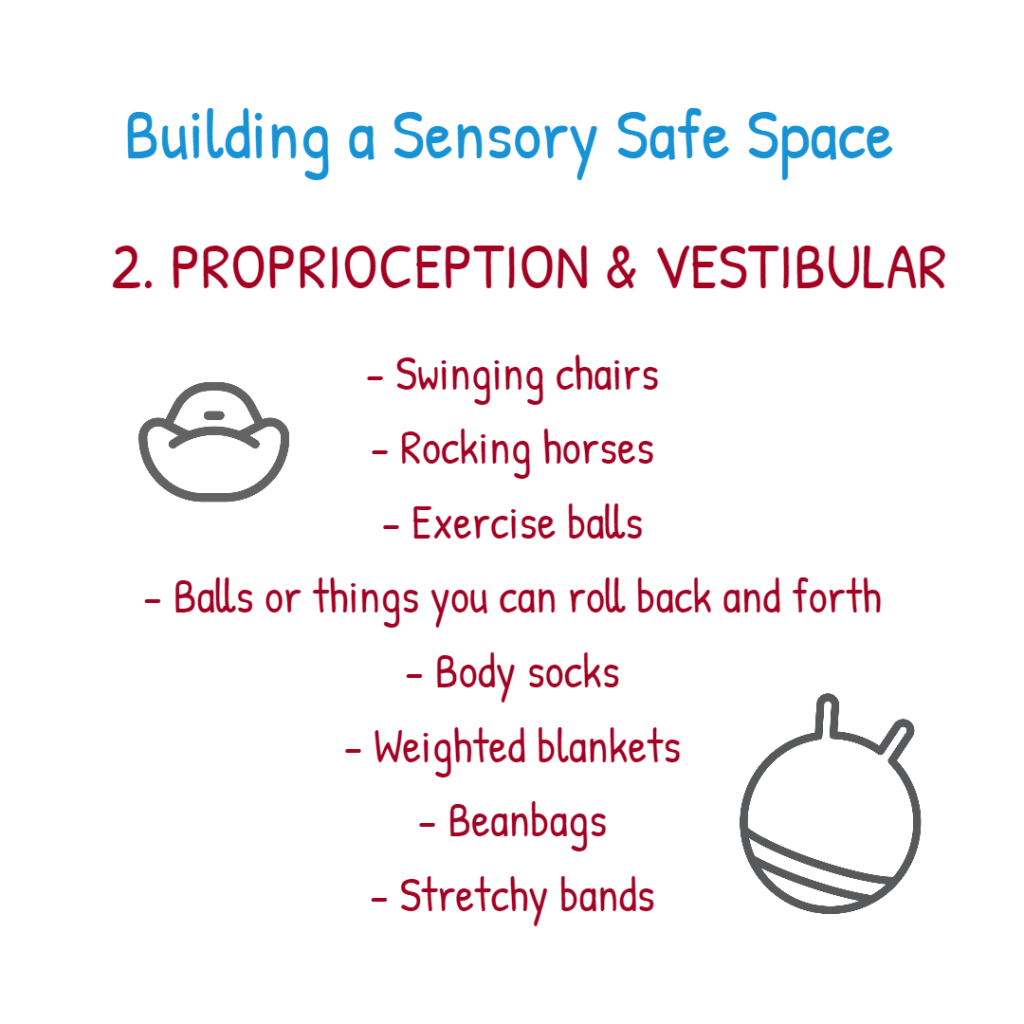

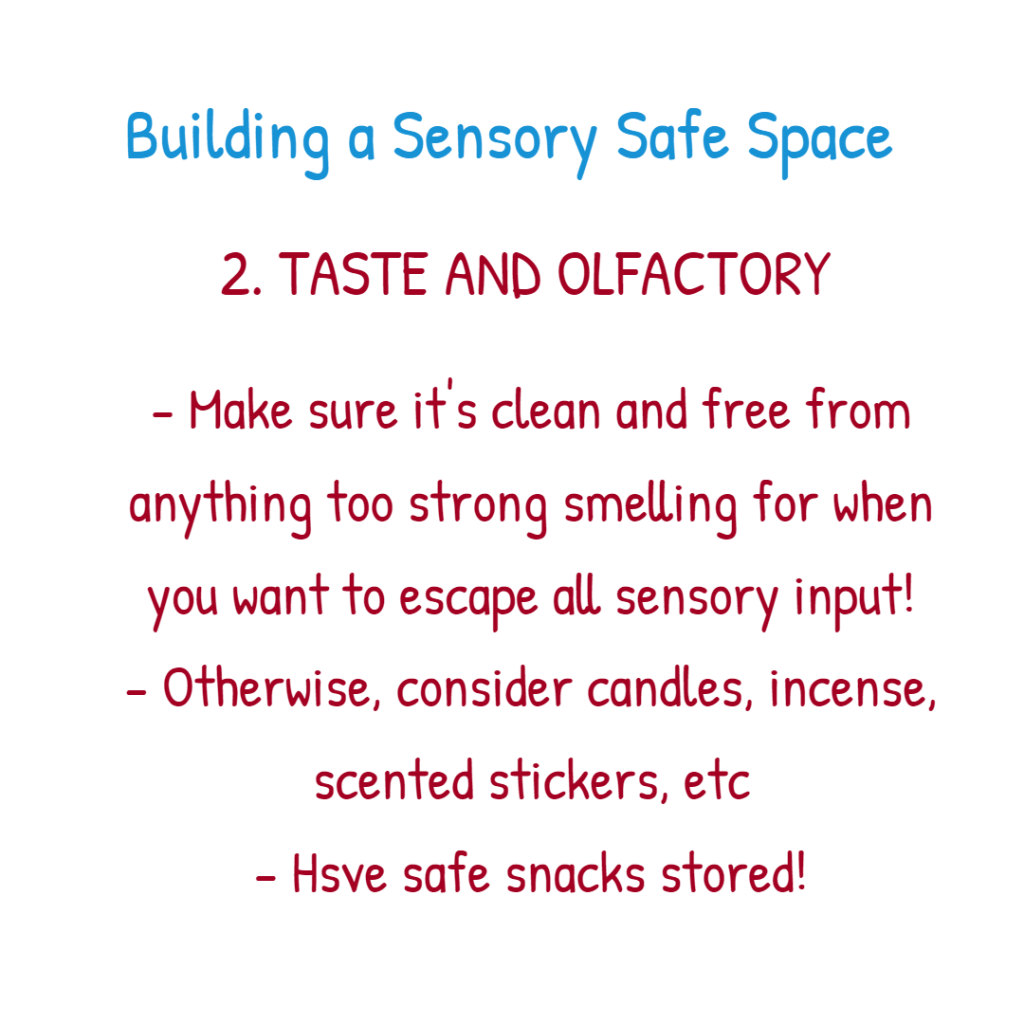
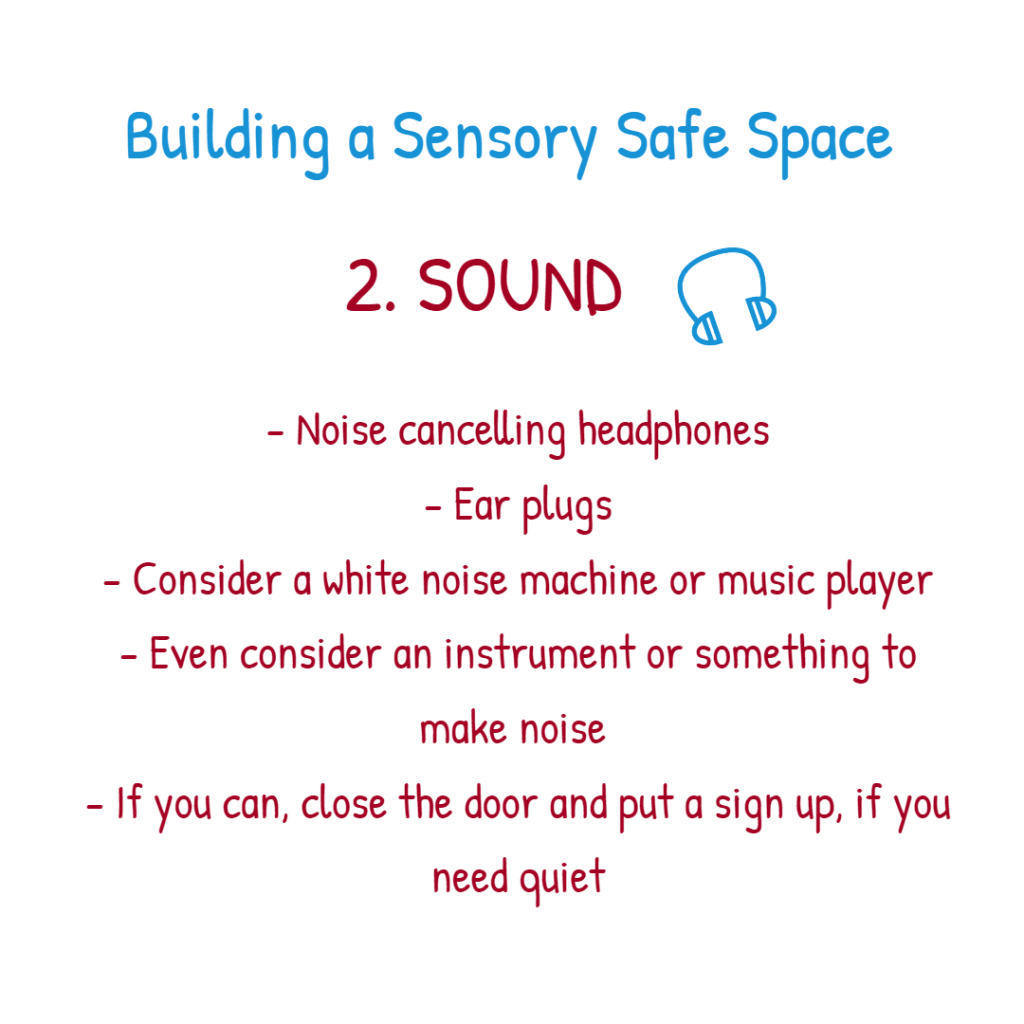
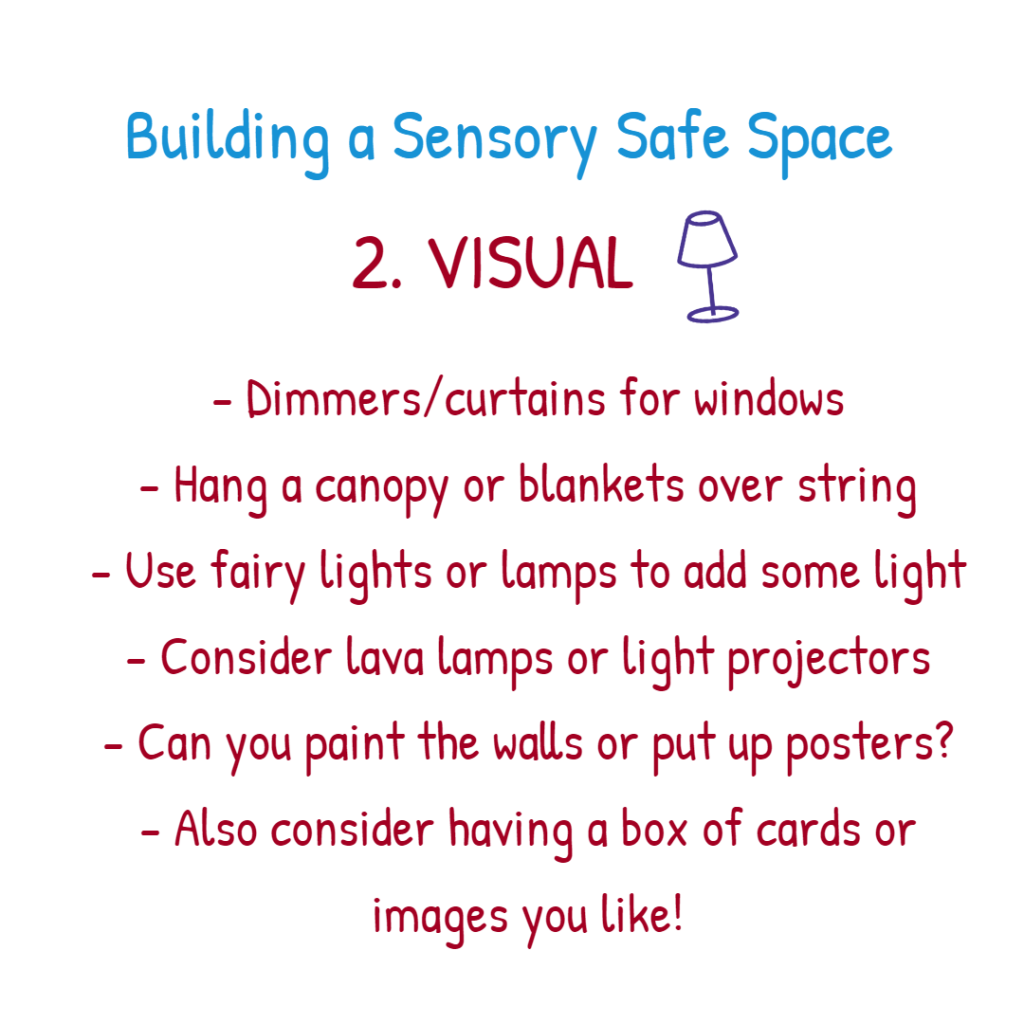
3. That’s it! Now just enjoy your sensory safe space!
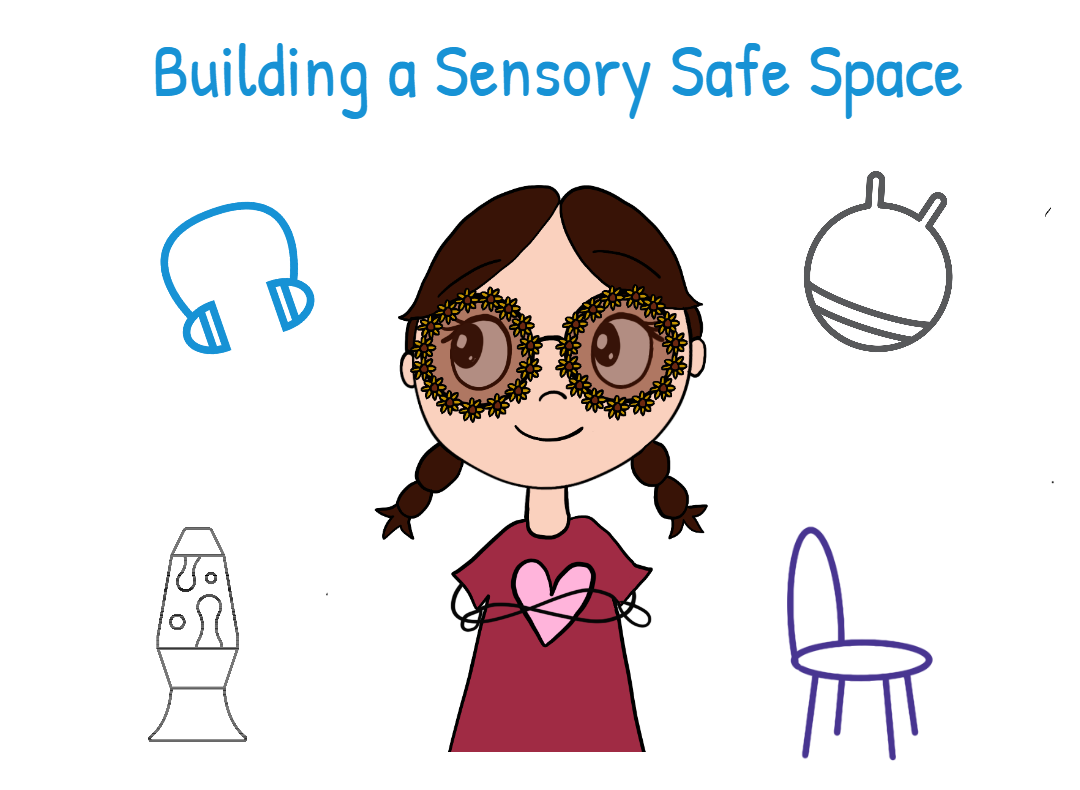
Leave a Reply